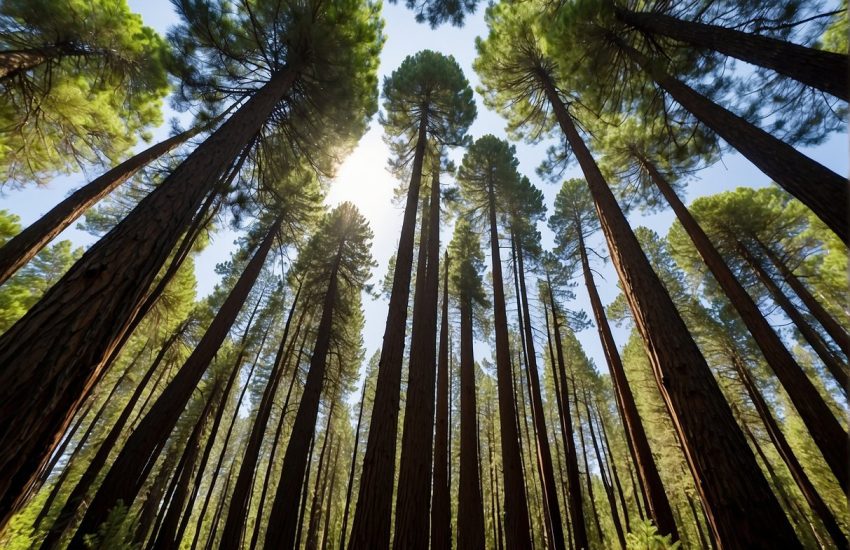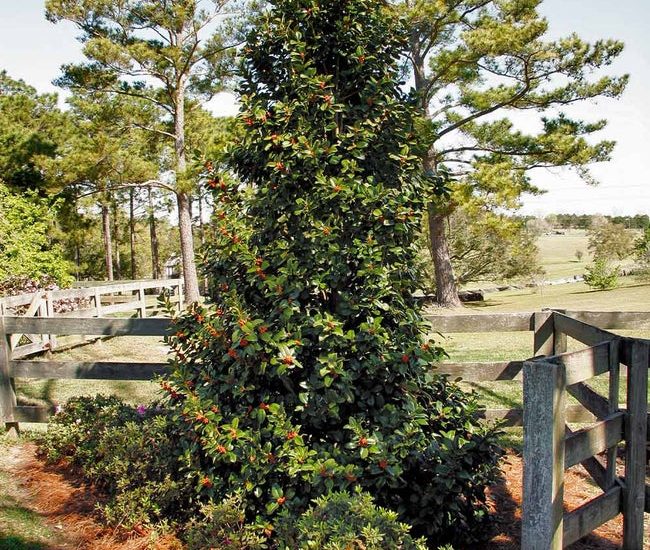5 Best Pine Trees To Grow In New York
The state of New York is located in the northeastern part of the country in U.S. Hardiness Zones 3 to 7 determined by the U.S. Department of Agriculture.
On one hand, New York’s uplands have cool summers and very snowy winters, but the southeastern lowlands enjoy warmer temperatures and a longer growing season.
Gardeners in New York should not only consider the tree’s size and growth rate, but also its intended use, any possible problems and its maturity date.
This pine (Pinus strobus) is native to the Eastern United States and is a hardy plant that does well in all New York hardiness zones.
Known as a fast-growing member of the Pinaceae plant family, this plant can reach heights of 50 to 80 feet and spreads up to 40 feet wide.
White pine trees do best in well-drained soils in locations that receive complete sunlight all day. The pine needles of this pine type have a blue-green color, while the pine cones have a brown color.
There is a potential problem with blister rust and white pine weevil infestations with this type of pine. Nevertheless, the eastern white pine is well adapted to growing in large areas of lawn.
Alpha Upright Canadian Hemlock
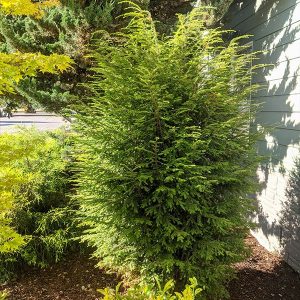
In terms of current garden design trends, soft, “fluffy” evergreens are the rage.
As a result, people are putting down their hedge trimmers and are letting the evergreens develop into their own natural forms.
In the form of a lovely column of dark green, Alpha Upright Canadian Hemlock (Tsuga canadensis ‘Alpha Upright’) is growing.
As the fine-textured growth continues as far as the ground is concerned, it remains lush and dense.
An excellent example is the Alpha Upright Canadian Hemlock. A variety of Hemlock shrubs with feathery foliage remain neat and tidy without any need to be pruned regularly due to its extraordinary foliage.
In addition, this particular plant becomes a very valuable asset in your property no matter what amount of sun you receive in your landscape. You simply will not have concerns with regards to the amount of sunlight that is received on your property.
Swiss Stone Pine
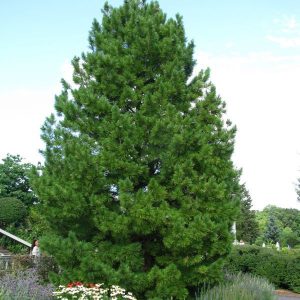
The Swiss Stone Pine (Pinus cembra) is a perfect little evergreen for a smaller landscape or yard.
It is a very slow grower, but it has a wonderful pyramid shape that makes an awesome living Christmas tree. But don’t let all of that Christmas imagery put you off. It looks great all year long!
It is densely packed with rich green needles that make it work well in any setting, from modern contemporary to rustic woodland to country cottage.
It is tailor made for a rock garden. This native of the mountains of Europe is a picturesque addition to any landscape.
A row of Swiss Stone Pines makes a beautiful hedgerow. Or try them along a fence line or driveway.
Botanic gardens use them as the focal point of large flower beds. They also do well in large pots and make great formal statements flanking a door or gate.
Red Pine Tree
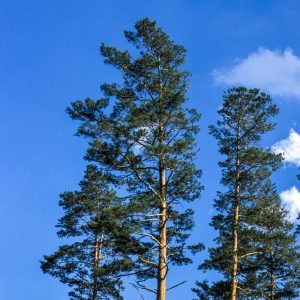
There was a time when Red Pine was planted all across the northern part of the U.S. and into Canada during the 1930’s.
This tree, as it is today, was prized for its tall and super-straight trunks, just like it is now.
Across the country, from New York to Seattle, you will see telephone poles made from Red Pine, just as they have been for the past 80 years.
Hence, if you are looking for a tall, straight, majestic tree that thrives in the North, the Red Pine is the answer.
Approximately 300 years old, this species of tree grows strong, is able to withstand harsh weather conditions, and is easy to care for.
Nature Hills provides only strong, healthy, field-grown saplings for their customers, so you will not be disappointed. Place your order today to enjoy your red pines for several years to come.
Japanese Umbrella Pine Tree

A Japanese evergreen species with a distinctive shape that put a new spin on traditional hedging and growth, the Japanese umbrella pine is aptly named for its elegant structure and cascading needles.
The slow and steady growth qualities of this plant make it an excellent choice for almost any part of your garden.
Whether you want it for driveway borders, plant beds, or even as a focal point for your front-yard, the Japanese Umbrella Pine grows above and beyond without any guesswork on your part, and it’s a fast-growing species.
Unless you’d like to train or shape the tree to suit your particular taste, you will not have to prune this unique tree.
Loblolly Pine Tree
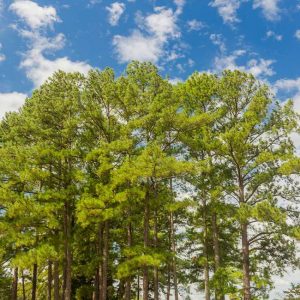
Would you like to plant an accent tree or privacy hedge that grows quickly? A Loblolly pine is an excellent choice for you.
The Loblolly Pine is a fast-growing species that grows up to two feet per year, making them a popular choice for gardeners and landscapers for quick privacy.
This Pine Tree is a good choice for the landscape, as it has a neat oval shape, slender, dark-green needles and red-brown cones, making it an attractive landscape solution.
At maturity, this tree can reach a height of 60-90 feet, so this tree is sure to last for generations to come!
This tree is native to the southeast part of the United States, and this easy-to-grow tree can withstand heat, flooding, poor soil conditions and even moderate drought.
Dwarf Mugo Pine
Dwarf Mugo Pines are able to add a dash of elegance to your garden beds. As the name implies, this popular dwarf conifer is a slow-growing, wide-spreading evergreen that’s perfect for rock gardens, foundation plantings, mixed groupings, and more. As a compact specimen, it is also suitable to grow in containers since it has a small footprint.Although the Dwarf Mugo Pine is capable of reaching a height of 3 to 5 feet and a width of 6 to 10 feet, they tend to remain smaller in most landscapes because of their slow growth.
Its stiff and upright dark green needles make it an excellent choice for adding texture to garden beds along with perennials or other dwarf shrubs.
As a dwarf Mugo Pine, you can either leave it in its natural, bushy form, or you can carefully prune it into a neat mound, as is common in Japanese gardens – it will look great either way.
What is the best part of all? You can grow this Dwarf Mugo Pine without having to spend much time and effort. This plant is extremely cold hardy (as far as Zone 2), but can also tolerate heat and humidity up to Zone 8.
The plant requires little maintenance and is bird friendly. In spite of the cold winters, it will maintain its lush emerald green foliage throughout the entire period.

